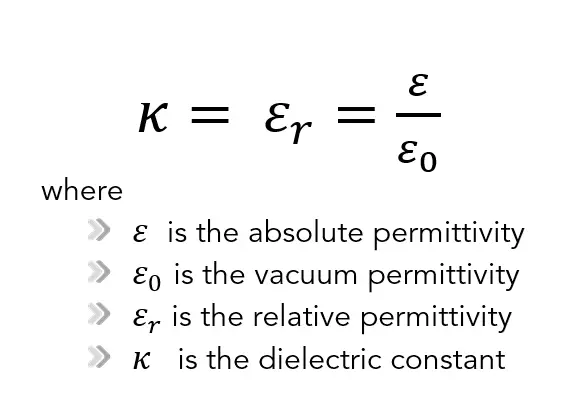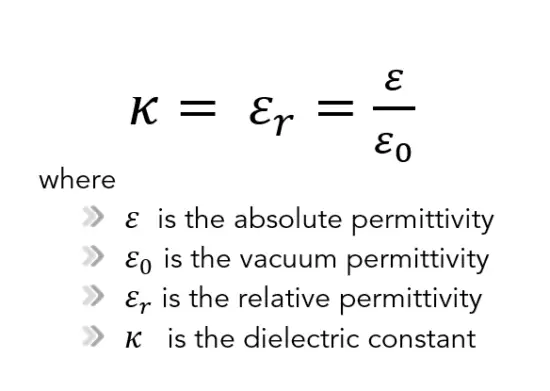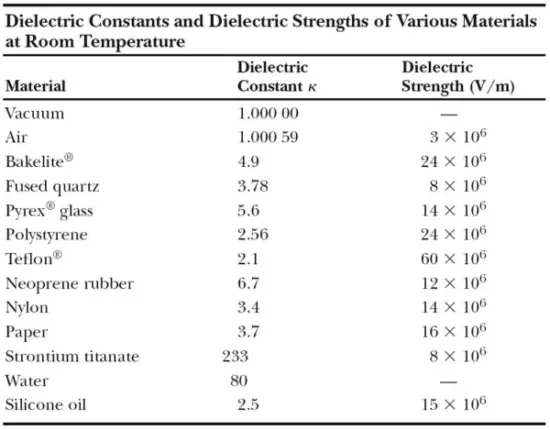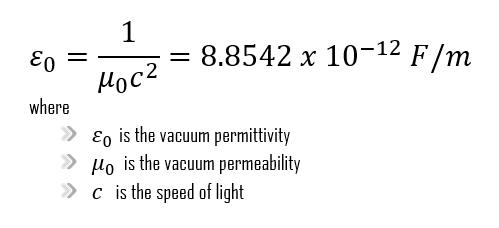30-second summary
Dielectric Constant vs Permittivity
In electromagnetism, permittivity, which is also known as absolute permittivity, is a measure of the electric polarizability of a dielectric or an insulator.
The dielectric constant of an insulator measures the ability of the insulator or dielectric to store electric energy in an electrical field.
The relative permittivity, which is denoted by εr, is the same quantity as the dielectric constant denoted by κ (kappa). The dielectric constant is still used but deprecated by standards organizations in engineering.
See also: Capacitance
See also: Electric polarization

Dielectric Constant vs Permittivity
In electromagnetism, permittivity, which is also known as absolute permittivity, is a measure of the electric polarizability of a dielectric or an insulator. The permittivity also characterizes the ability of the dielectric to store electric energy in an electrical field.
A material with high permittivity, such as strontium titanate, polarizes more in response to an applied electric field than a material with low permittivity, thereby storing more energy in the material. In electrostatics, permittivity plays an important role in determining the capacitance of a capacitor.
The absolute permittivity is often represented by the dimensionless relative permittivity, εr, which is the ratio of the absolute permittivity ε and the vacuum permittivity ε0.


As can be seen, the main difference between relative and absolute permittivity is that relative permittivity is a dimensionless unit, while absolute permittivity units are farads per meter.
The relative permittivity, which is denoted by εr, is the same quantity as the dielectric constant denoted by κ (kappa). The dielectric constant is still used but deprecated by standards organizations in engineering.
The relative permittivity of a vacuum is unity by definition. Because air is mostly empty space, its measured relative permittivity is only slightly greater than unity (κair = 1.0006). Even common paper can significantly increase the capacitance of a capacitor, and some materials, such as strontium titanate, can increase the capacitance by more than two orders of magnitude.
The greater the relative permittivity, the greater the amount of charge that can be held. The capacitance of a capacitor is increased by a factor of relative permittivity when the gap between the plates is completely filled with a dielectric.
C = εrC0 = κeC0
where C0 is the capacitance between the plates with no dielectric.
Vacuum Permittivity
The vacuum permittivity (also called the permittivity of free space or the electric constant), ε0, is a physical constant that is a measure of how dense of an electric field is “permitted” to form in response to electric charges.
It is also connected to the energy stored within an electric field and capacitance. Perhaps more surprisingly, it’s fundamentally related to the speed of light. The vacuum permittivity is defined as:


